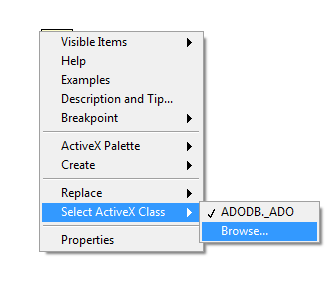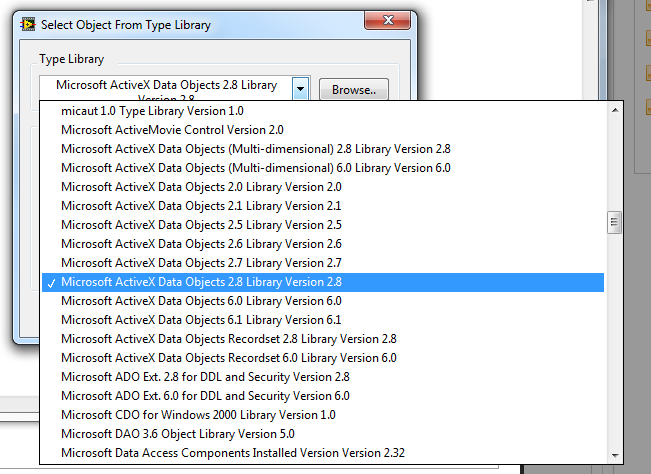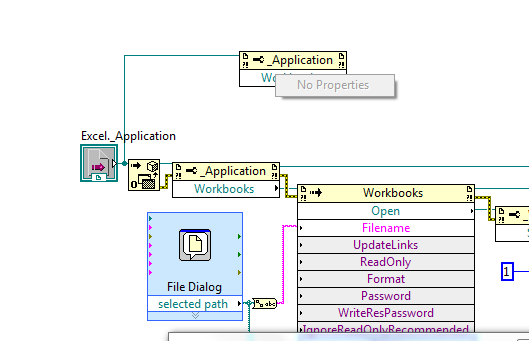Delete Columns in Excel Spreadsheet Using LabVIEW and Excel ActiveX Server
- Subscribe to RSS Feed
- Mark as New
- Mark as Read
- Bookmark
- Subscribe
- Printer Friendly Page
- Report to a Moderator
Products and Environment
This section reflects the products and operating system used to create the example.To download NI software, including the products shown below, visit ni.com/downloads.
- LabVIEW
Software
Code and Documents
Attachment
Overview
This example prompts for a file and for the letter of the column to delete.
Description
Using the Excel ActiveX Server, you can open a reference to an Excel spreadsheet and delete a given column. It saves the file to the same location/filename with " - modifed" added to the file name using regular expressions.
Requirements
- LabVIEW 2012 (or compatible)
Steps to Implement or Execute Code
- Run the program
- Select the excel file to revise.
Additional Information or References
VI Snippet
**This document has been updated to meet the current required format for the NI Code Exchange.**
National Instruments
Example code from the Example Code Exchange in the NI Community is licensed with the MIT license.
- Mark as Read
- Mark as New
- Bookmark
- Permalink
- Report to a Moderator
I'm just wondering, how does one create an application refnum. In this case it is Excel.Application, where did it come from?
- Mark as Read
- Mark as New
- Bookmark
- Permalink
- Report to a Moderator
Ok, sorry it's simple. Insert an automation control on the front panel or auomation refnum on the block diagram. Right click and select activex class.
- Mark as Read
- Mark as New
- Bookmark
- Permalink
- Report to a Moderator
Hello!
i have few doubts,
1. i am not able to find excel.application:
i right clicked on input of automation block and click on browse. I am not sure how to select excel.application.
2. with the example you provided, i am not able to select properties for property node. Here are the images i came accross.


- Mark as Read
- Mark as New
- Bookmark
- Permalink
- Report to a Moderator
I had the same issue where Excel.Application was not showing up in the type library even though Excel came pre-installed on my laptop. I resolved it by going to my Office365 page and selecting the "Install Office" link. I'm not sure if it made a difference, but I also chose to install office with the same bitness (32 vs. 64) to match my LabVIEW install.

